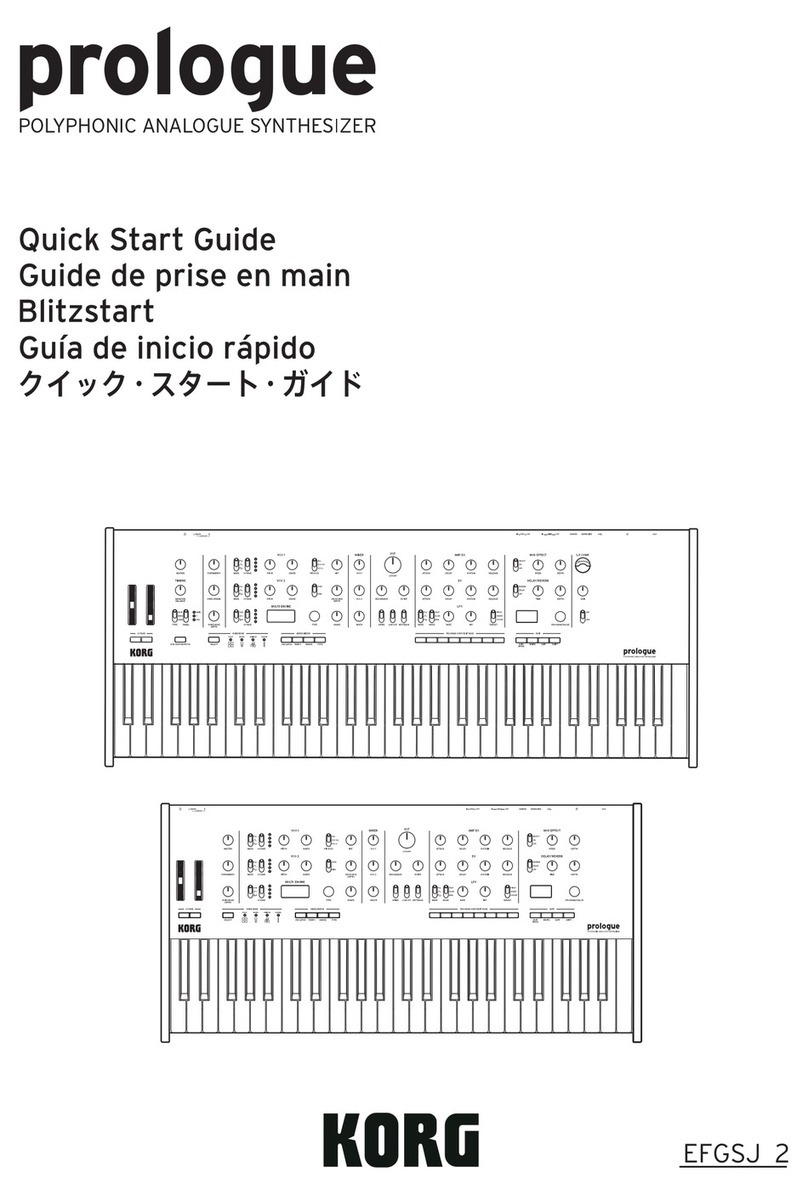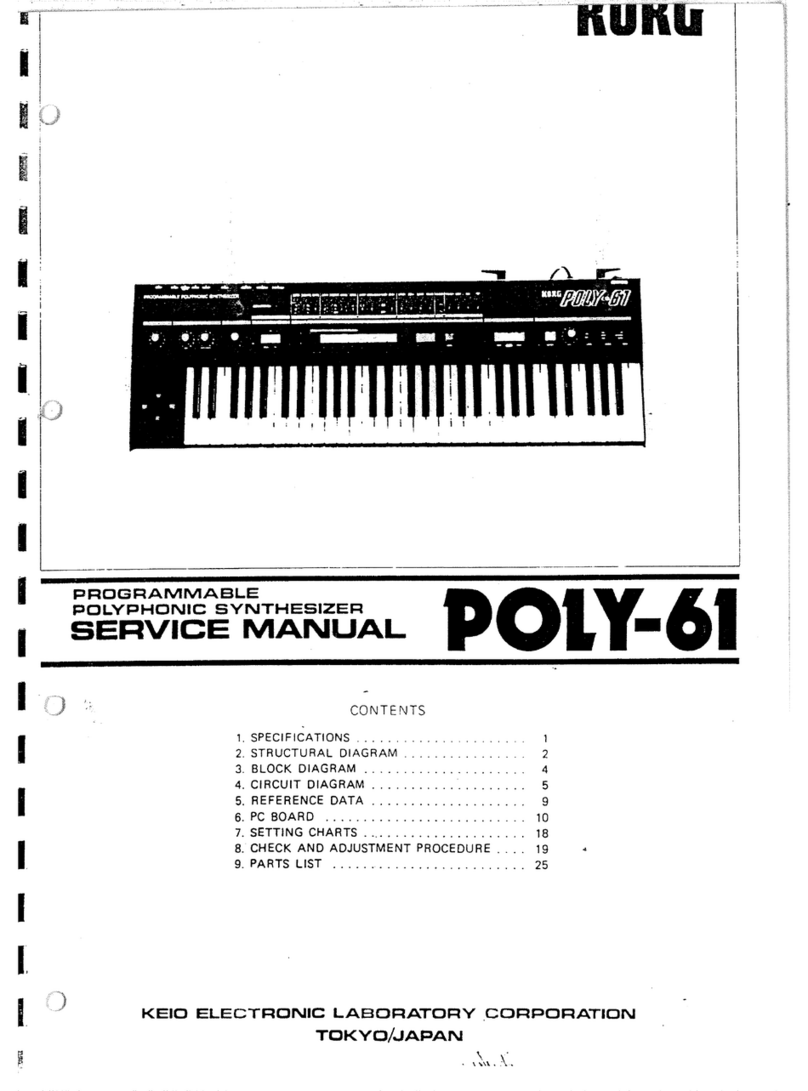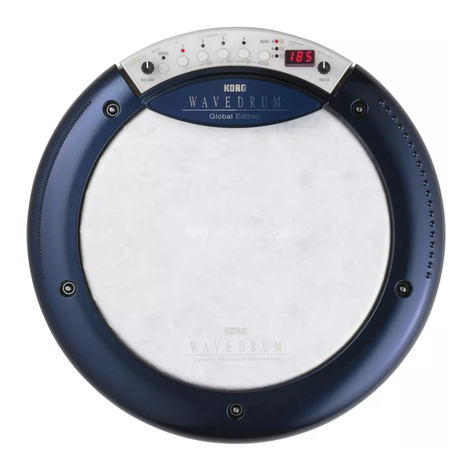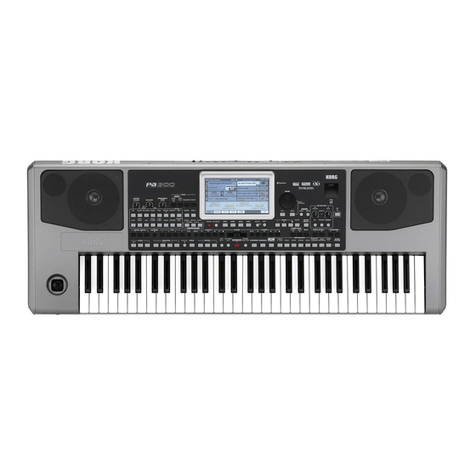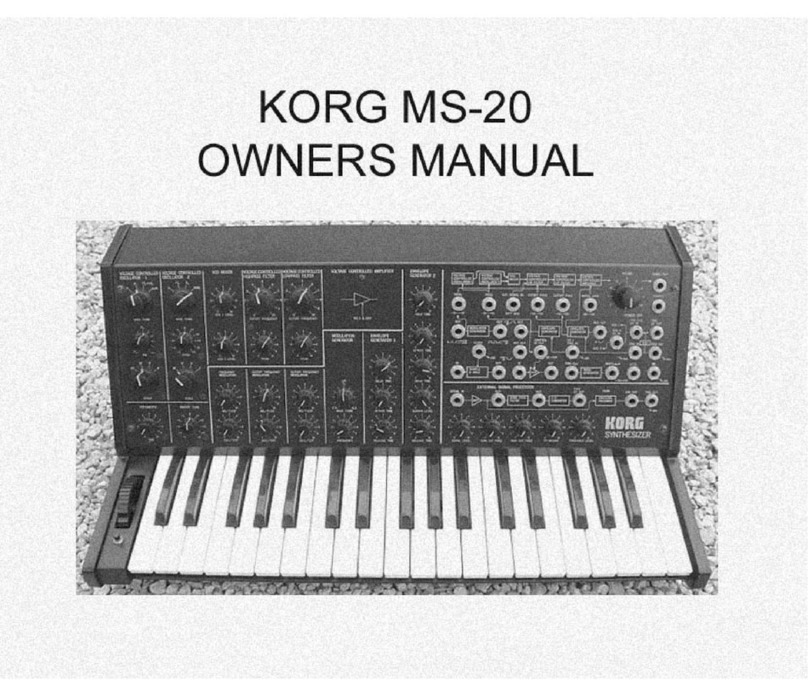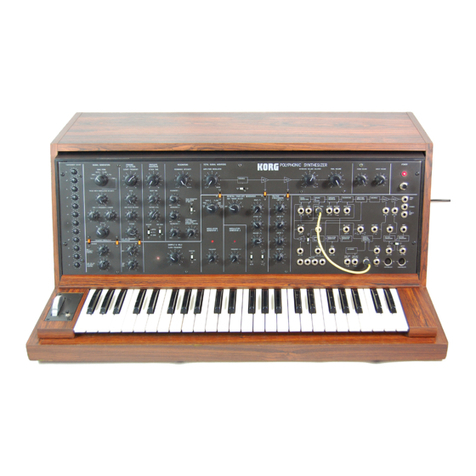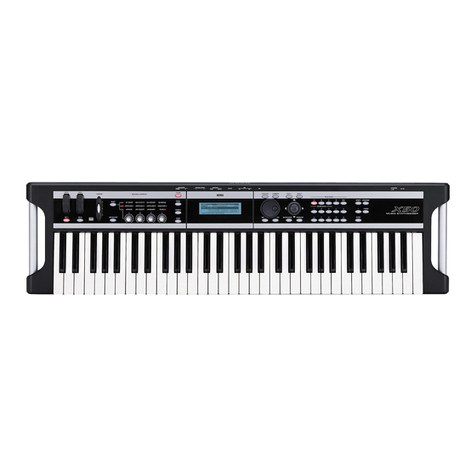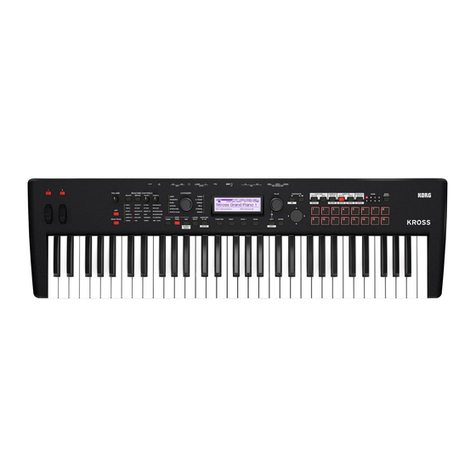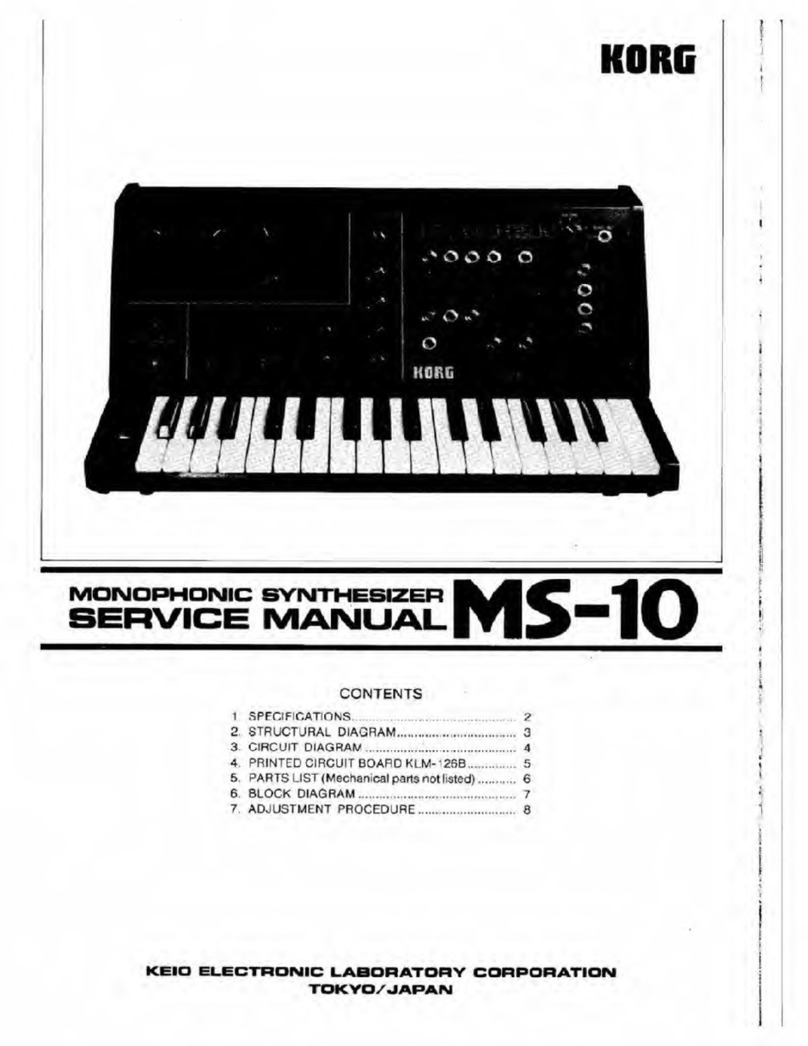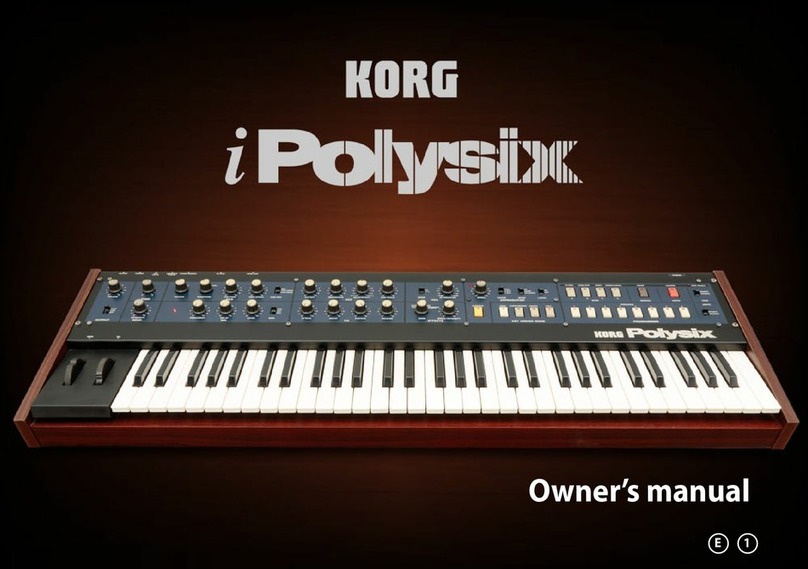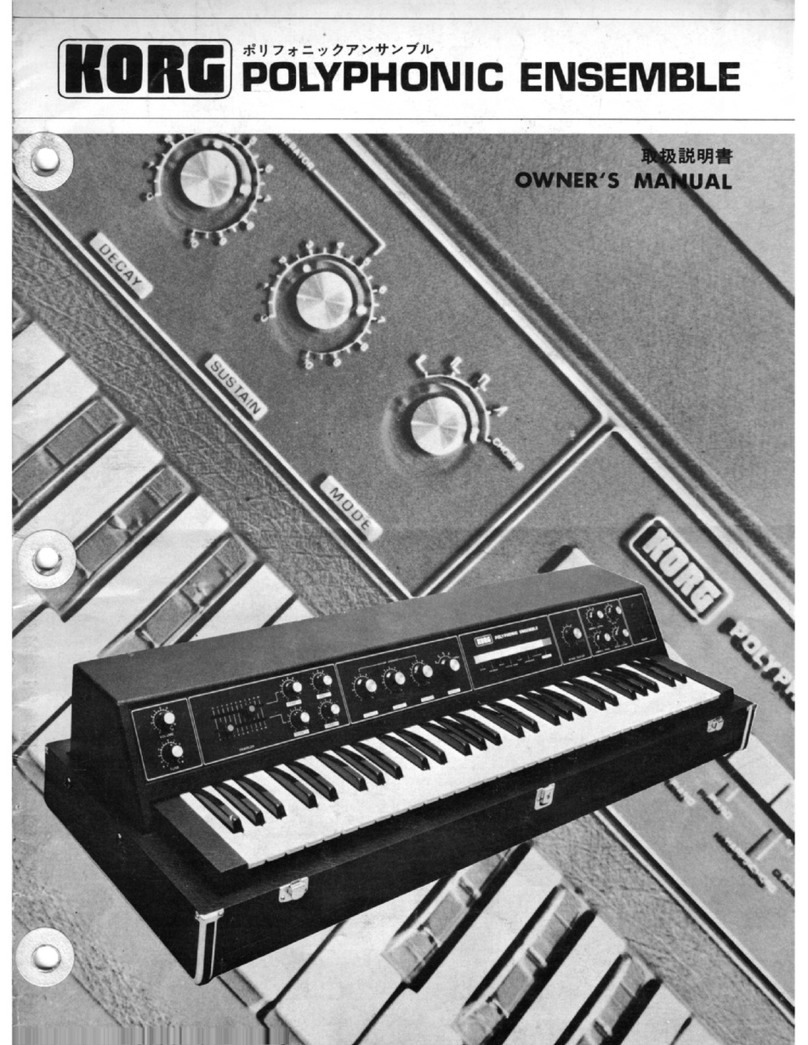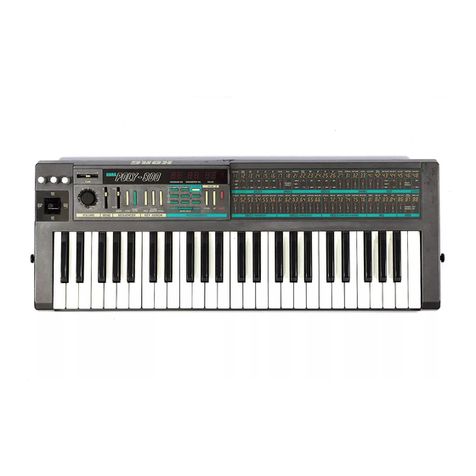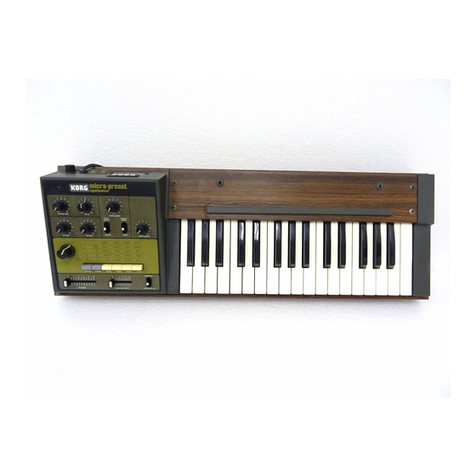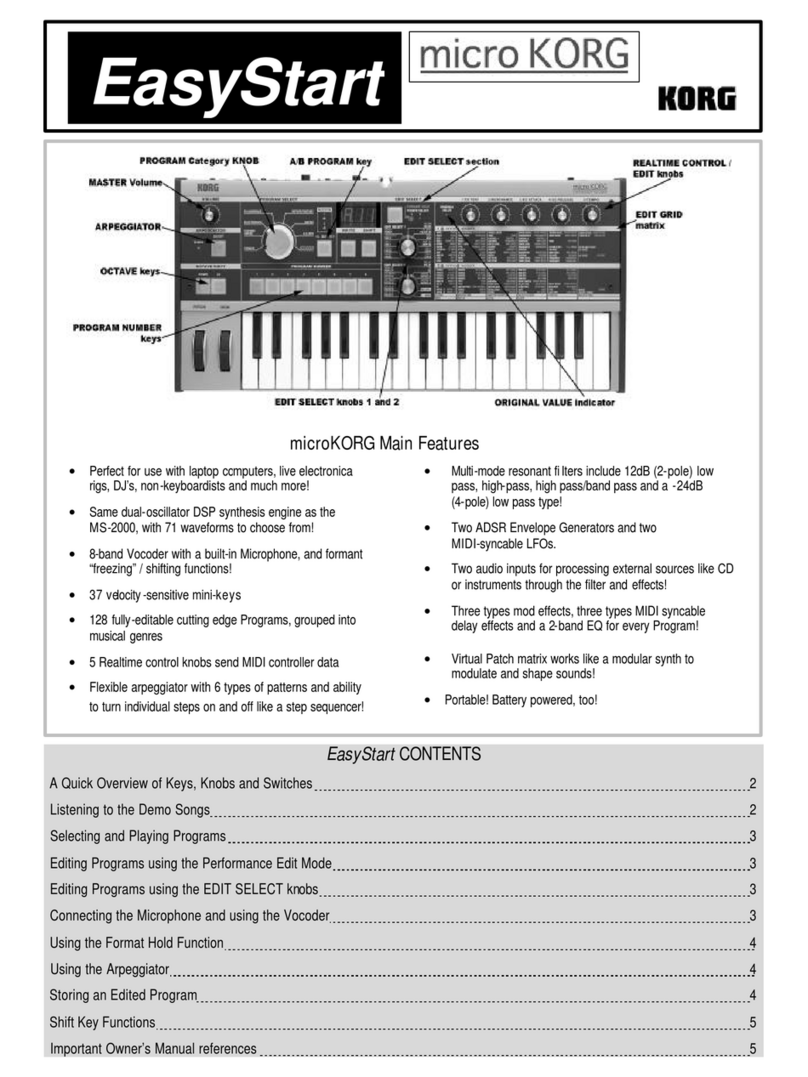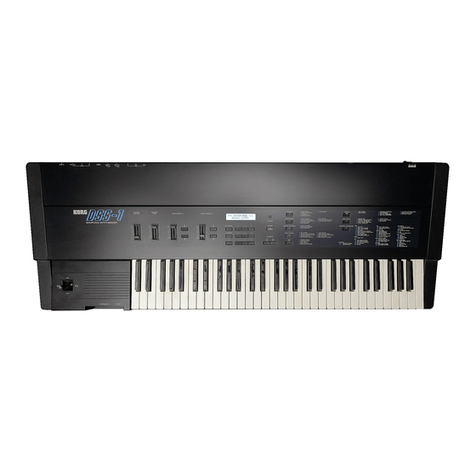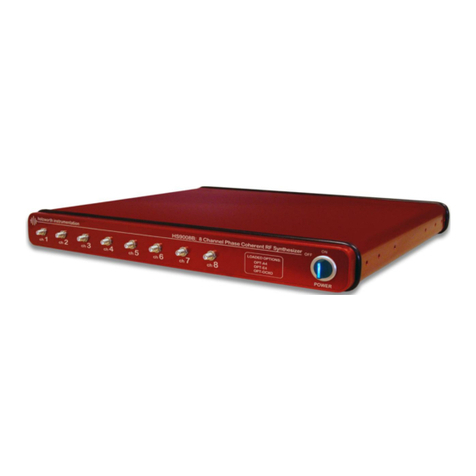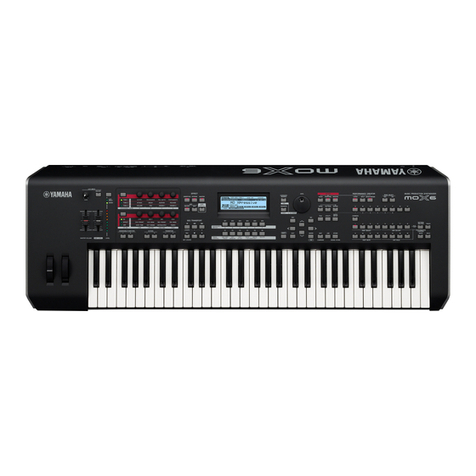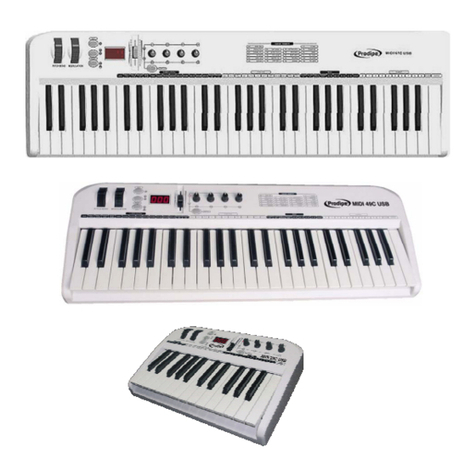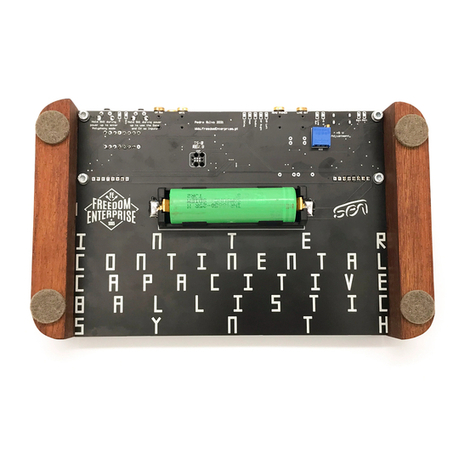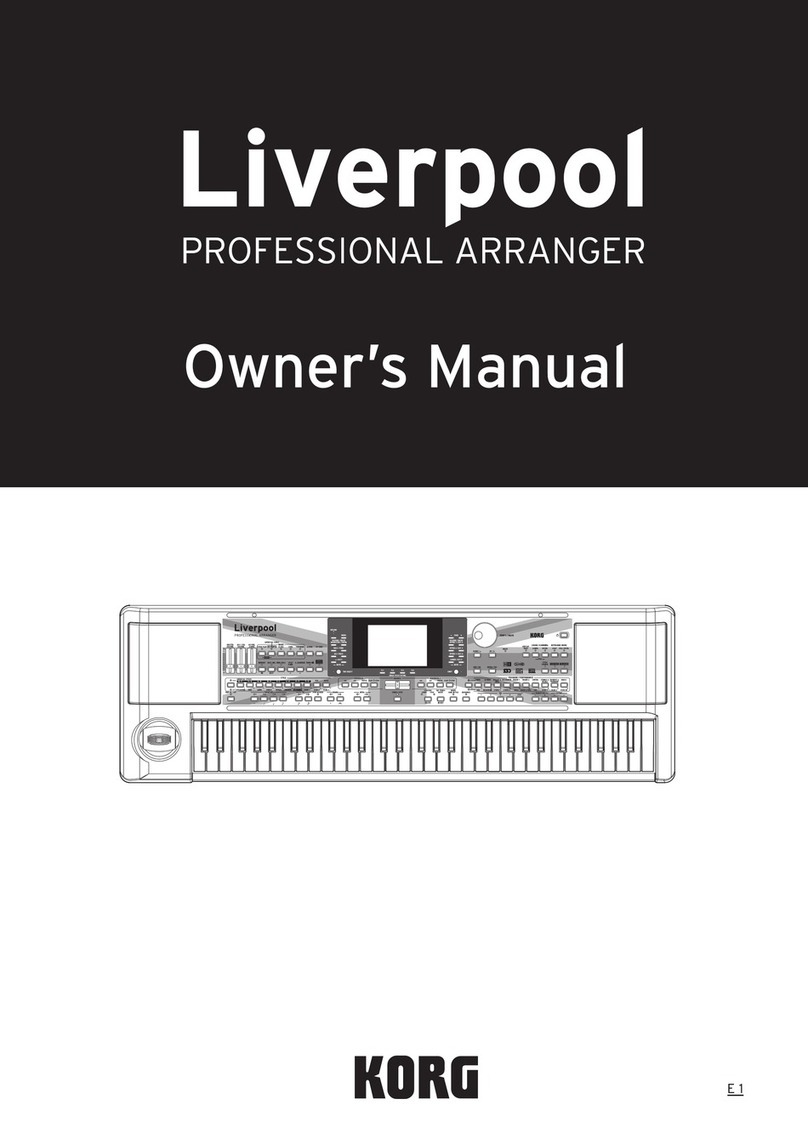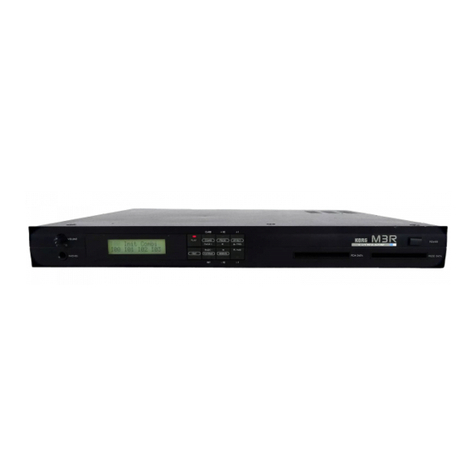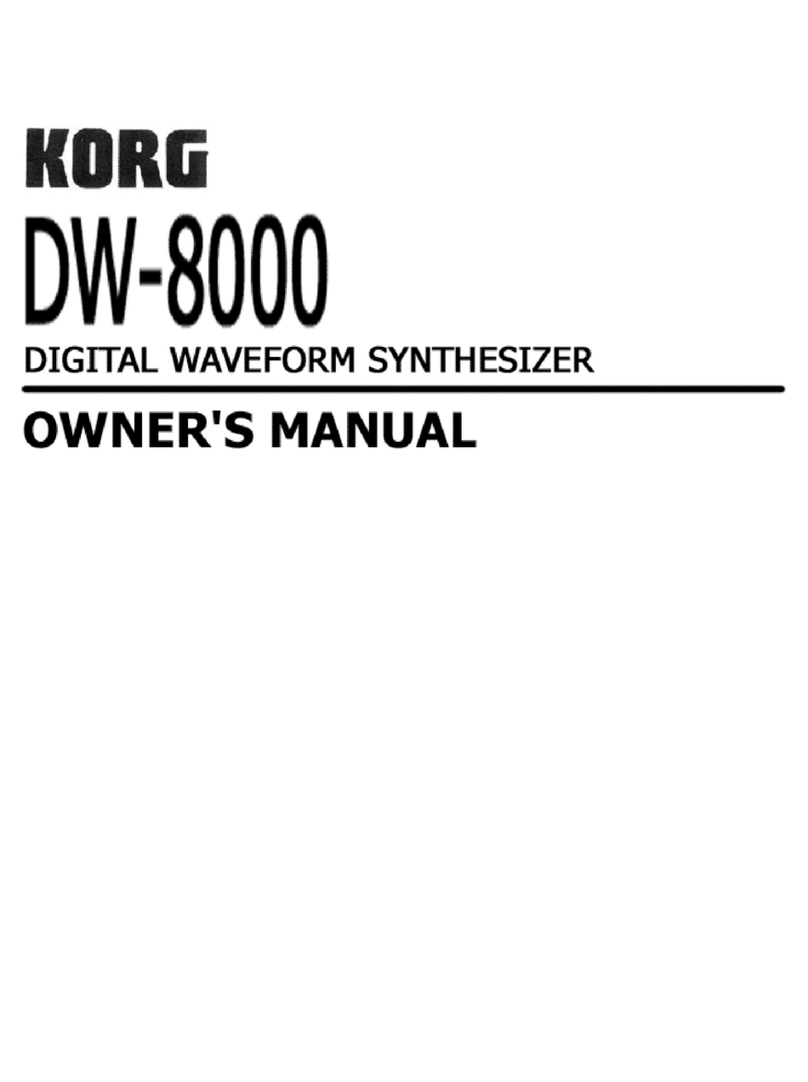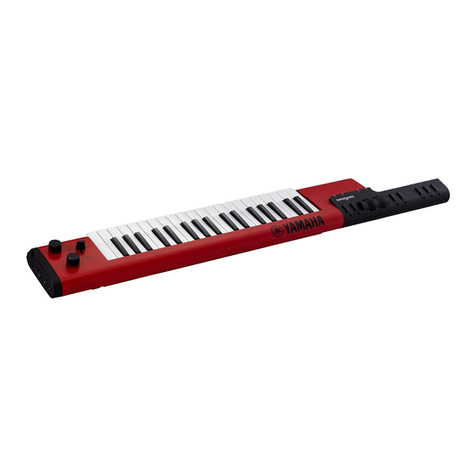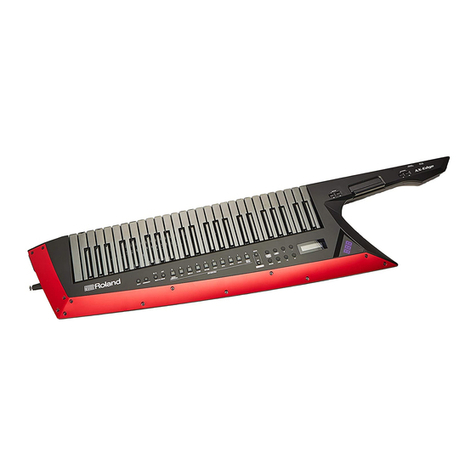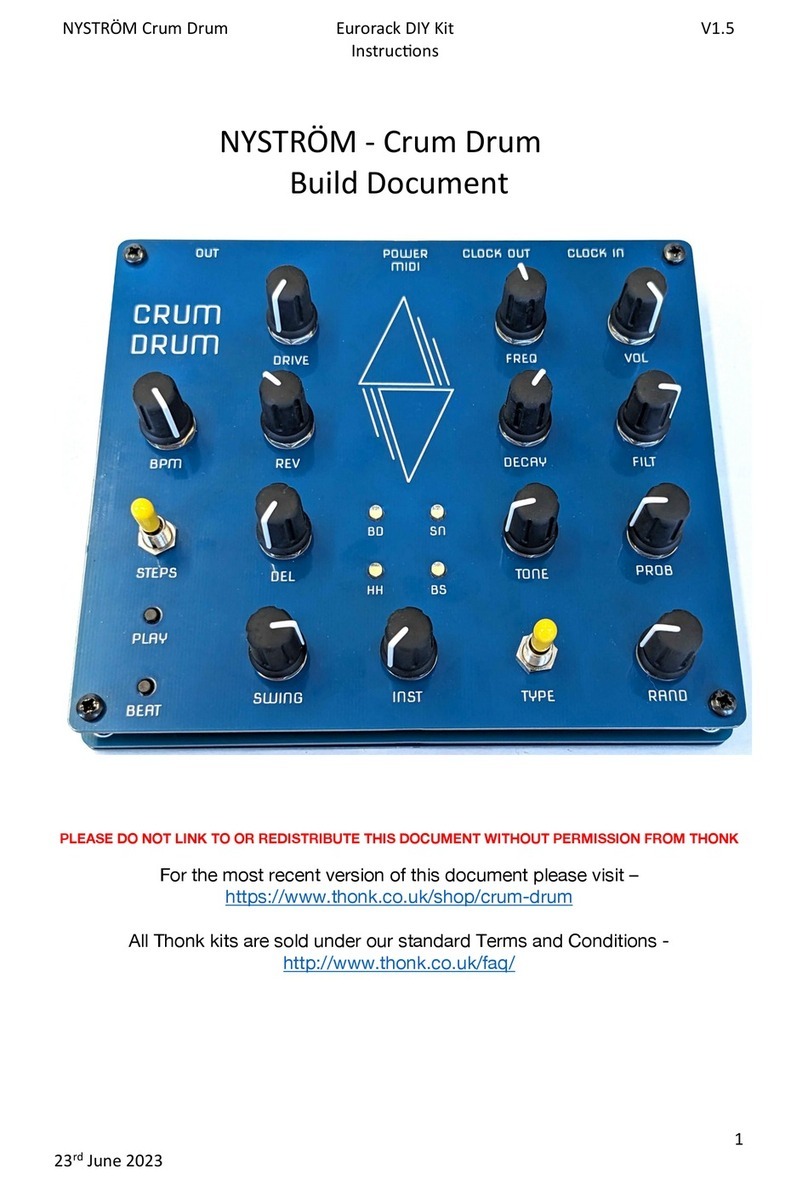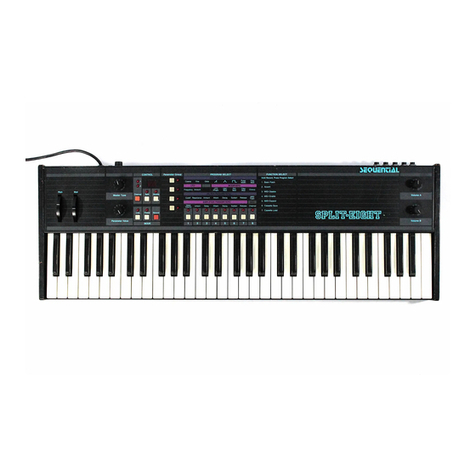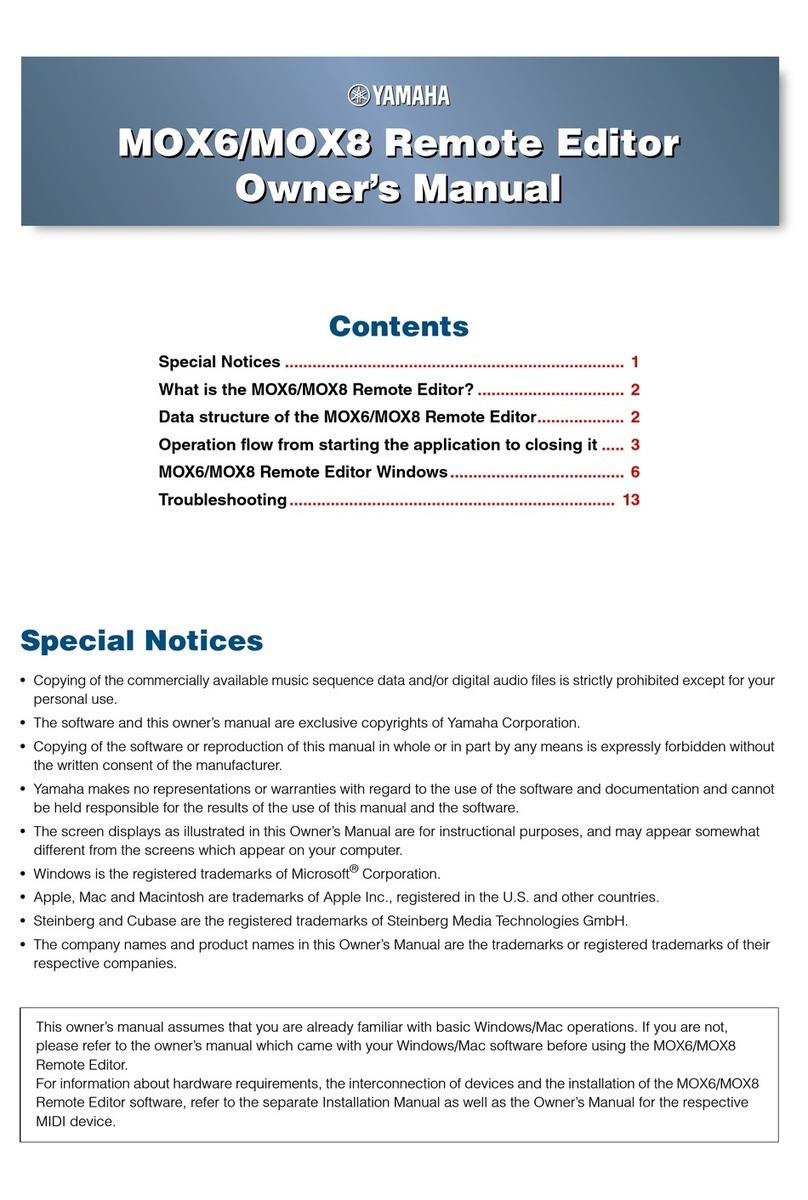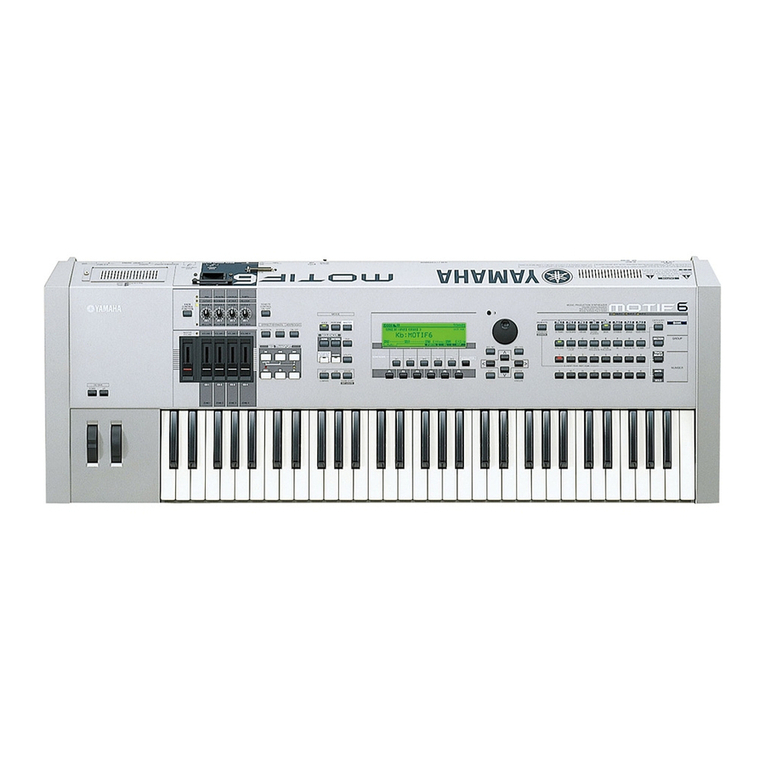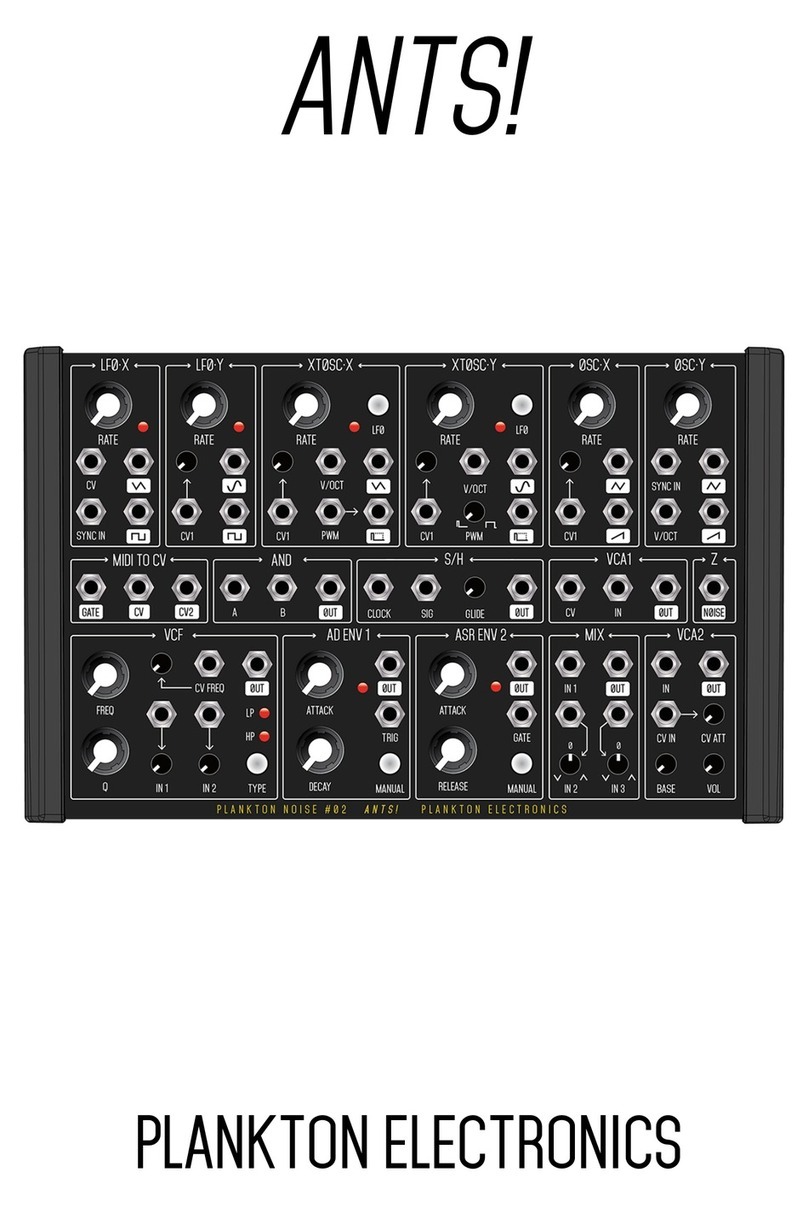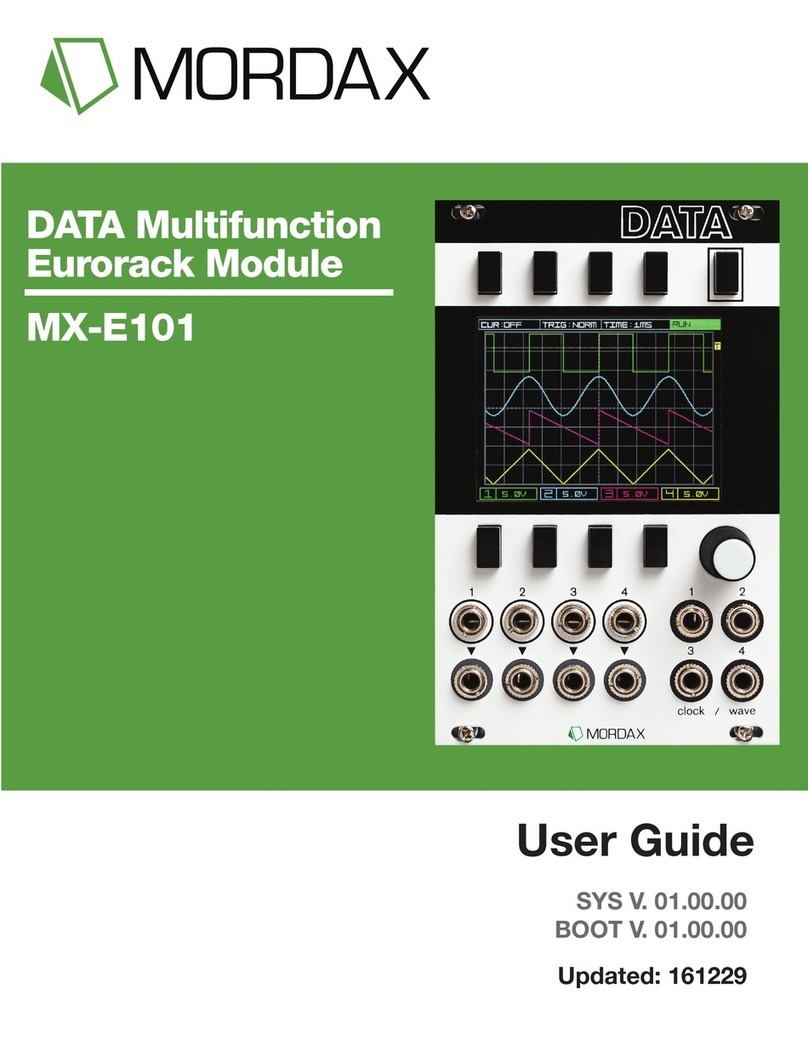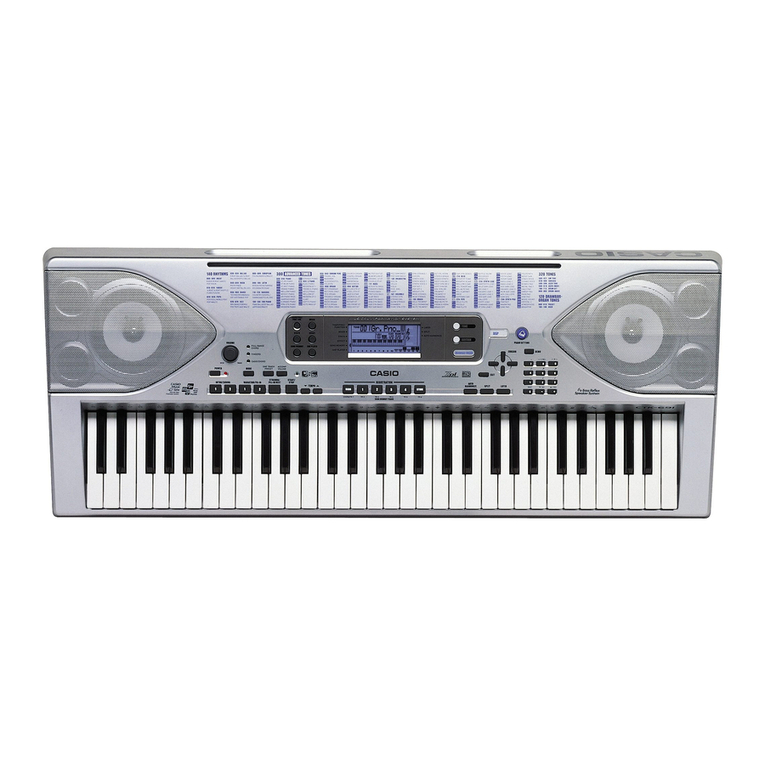•mm
/\ BM3&
n_ w&m f$&{§t£ **•£ 4it -c ££s* fc ^.ffliY*
ilS+
affimm flatted* s#*&&*, a**^
tit J to ffi, f, $?£&% *wflfeAJ»
n./<;uxjg[
CHORUS
3—yX2oo*SS |pJli#l-P.ft &Lfc ft i-4-3»*
Tz?><r)\z- HSliLFOxf- K«o-^
i^T'fTi-^ii". T3-fit >4if <7)
EXT.
INPUT
x-9 7,9-
+K<
>,ffcw x > -fe-t.'f t-^ ««& Lxm
m-t &t § fc I* -Wtf S* xa>-l:L TT
$V\, (fflL, VCO I- t'7f, **
>-7i VCO MODULATOR--o K
WAVE FORMS
/\Triangle
[TSquare
ASaw-Tooth
O-Pulse
CHORUS
EXT.INPUT
The fundamental component of
harmonics is rich and provide a
pure and clear sound.
Most appropriate for creating
sounds in the flute family or a
clear sound color similar to a
tuning fork.
Since there are few harmonics,
the Traveler Control effective
direction is not particularly ex-
treme.
Provides closed-pipe sounds (cla-
rinet, etc.) by removing even-num-
bered harmonics.
Since this basic tone contains
many harmonics and is sufficient-
ly large, it is suitable for creat-
ing awide range of tone colors.
Its versatility can be expanded
by combining the Traveler Cont-
rol to create string, wind, picked
string and human voice effects,
plus many others.
Higher harmonic elements abound
in this waveform, making use of
the Traveler Control highly effec-
tive, especially for creating reed
sounds or all new synthetic tone
colors.
The effect produced when two in-
struments are played simultane-
ously can be obtained. Using the
LFO speed knob adjust the beat
to obtain the difference in pitch
of two tones. Accordion and simi-
lar sounds can then be easily
produced.
Use this position when an electric
guitar, an electric piano or an-
other synthesizer, etc. is connect-
ed to the external input jack at
the rear.
Dvco n
M**-*> a4»/ +£VCO 1*>(, vco ik-^x.
-CTS^. StSg^ffti VCO nǤ4'Lit. %
\z. t'/fp-x (COARSE) oiAfcBIL-CT* £»
e-yf-«ortJli;fc;£ <4*99-~r^i]'<-L fta
fiMHSH±-7T 4>(FINEJoi^-CfToTT^^. ,
>RING MODULATOR I»II
i) ^tfi W--7-IJVC0 ItVCO IKOigf-fc
2o(7) m%i&*)wmxn&*<± #<ant l j i- ^
x
VCO 1«t;;-7ojAtVCO II«f7-fo
>?*r* v-?- iii=gfPtt. ixm+tttu n
2) vco n
IChange the position of the MIXER switch from
VCO Ito VCO II and depress akey. The
sound of VCO II will then be produced. Next,
turn the PITCH COARSE knob, and the synthe-
sizer will cover awide pitch range of 4octaves.
Make fine adjustment with the FINE knob.
IRING MODULATOR Iand II
Device for combining electrically the sounds of
VCO Iand VCO II. Particularly in relation to
two frequencies the variations and changes in
tone color can be demonstrated using the OCTAVE
knob of VCO Iand the PITCH knob of VCO II.
Using R. MODULATOR 1,continuous tone steps,














